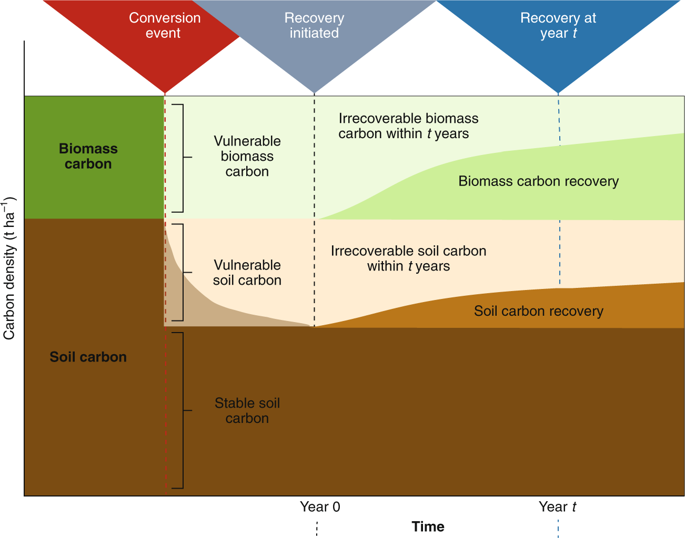Nature Climate Change ( IF 29.6 ) Pub Date : 2020-03-31 , DOI: 10.1038/s41558-020-0738-8 Allie Goldstein , Will R. Turner , Seth A. Spawn , Kristina J. Anderson-Teixeira , Susan Cook-Patton , Joseph Fargione , Holly K. Gibbs , Bronson Griscom , Jennifer H. Hewson , Jennifer F. Howard , Juan Carlos Ledezma , Susan Page , Lian Pin Koh , Johan Rockström , Jonathan Sanderman , David G. Hole

|
Avoiding catastrophic climate change requires rapid decarbonization and improved ecosystem stewardship. To achieve the latter, ecosystems should be prioritized by responsiveness to direct, localized action and the magnitude and recoverability of their carbon stores. Here, we show that a range of ecosystems contain ‘irrecoverable carbon’ that is vulnerable to release upon land use conversion and, once lost, is not recoverable on timescales relevant to avoiding dangerous climate impacts. Globally, ecosystems highly affected by human land-use decisions contain at least 260 Gt of irrecoverable carbon, with particularly high densities in peatlands, mangroves, old-growth forests and marshes. To achieve climate goals, we must safeguard these irrecoverable carbon pools through an expanded set of policy and finance strategies.
中文翻译:

保护地球生态系统中不可回收的碳
要避免灾难性的气候变化,需要快速脱碳和改善生态系统管理。为实现后者,应优先考虑生态系统对直接,局部行动的反应能力及其碳储量的大小和可恢复性。在这里,我们表明,一系列生态系统包含“不可恢复的碳”,这些碳很容易在土地用途转换后释放,一旦丢失,就无法避免与危险的气候影响有关的时间尺度上的恢复。在全球范围内,受人类土地使用决策严重影响的生态系统至少包含260 Gt不可恢复的碳,在泥炭地,红树林,旧林和沼泽中密度特别高。为了实现气候目标,我们必须通过一系列扩大的政策和金融策略来保护这些不可回收的碳库。











































 京公网安备 11010802027423号
京公网安备 11010802027423号